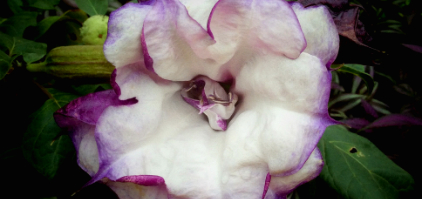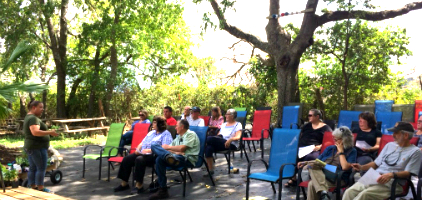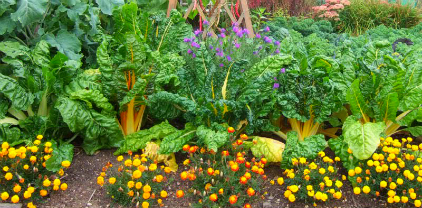The idea of having two or more plants growing next to each other
to the mutual benefit of each has been around for thousands of
years. Beyond this basic concept, it is actually more controversial
than one might anticipate. (But then isn’t everything these days!)
Research shows that certain plants emit compounds and chemicals
that create positive and negative growing environments for their
surrounding neighbors.
Many assumptions are also derived from years of pass-along infor-
mation (that usually accompanies pass-along plants) and cultural
traditions. So although there aren't many agreed-upon, hard and
fast rules, here are some do’s and don’ts that have a good chance
of being beneficial to you and your plants.
It is good practice for gardeners to mix different plant groups and
families together, no matter the situation. When you grow just one
type of plant, you have a monoculture on your hands, which is a
problem. Diseases and insects are given a free buffet to feast upon
with no break in the action.
Biological diversity in the plant or animal kingdom is the key to a
healthy ecosystem – from a large farm to a small raised planter bed.
Mixing different plants and seasonal crop rotation helps to keep
nematodes at bay around tomatoes and others in the nightshade
family. It also keeps Brassicas from attracting every caterpillar-
creating moth and butterfly from miles away, and stops blight
from spreading like wildfire through your garden.
Planting garlic around your roses is another good habit. This piece
of advice has been around forever and has scientific and folkloric
merit. University studies have shown that garlic keeps aphids at
bay. They may also help to control thrips and make the roses more
fragrant.
The best approach? Plant a border of society garlic or garlic chives
near the roses. Onion chives don’t do so well here, but the other
two will give you years of rose protection, flowers and of course
some culinary uses.
If we look back through history, we find the concept of companion
planting to be central to success of the 'the Three Sisters.' This is
the corn, beans and squash trio that Native American tribes have
cultivated for thousands of years.
The corn acts as a 'trellis' for the beans, and the beans stabilize the
corn and add nitrogen to the soil when they decay, feeding the soil
for the next generation of crops. The running squash shades and
cools the soil, keeping moisture stable allowing for the corn and
beans to thrive even in the heat of the summer.
Purslane is another ground-cover vegetable that can have a similar
role to the squash. This tasty salad green can be seeded under taller
crops to act as living mulch. This little 'noxious weed' is actually
high in Omega-3 fatty acids and beta carotene.
Basil has been said to have a positive effect on tomatoes, both in
keeping away aphids and tomato hornworms (fingers crossed!)
while improving the flavor of the tomato.
Whether completely true or not, the two make a great side-by-side
combination in the garden and on the table, and are therefore well
worth experimenting with.
There is some evidence that marigolds (genus Tagetes) can help to
keep aphids away from the garden. To do this the scent would need
to be quite strong (Copper Canyon daisy for example) and closely
set for there to be much benefit. On the other hand, they seem to
attract spider mites like crazy so . . . this may be more myth than
fact.
But there's one fact we can be sure of: planting rue next to some
plants, especially basil, can cause them to decline and even die. Rue
is an excellent butterfly larvae plant and deserves a place in the gar-
den, but think of it as the anti-companion plant and plan accordingly!
Just remember . . . never be afraid to experiment with garden folk-
lore advice, keep your garden rich in its variety. . . and happy
planting! ❦








